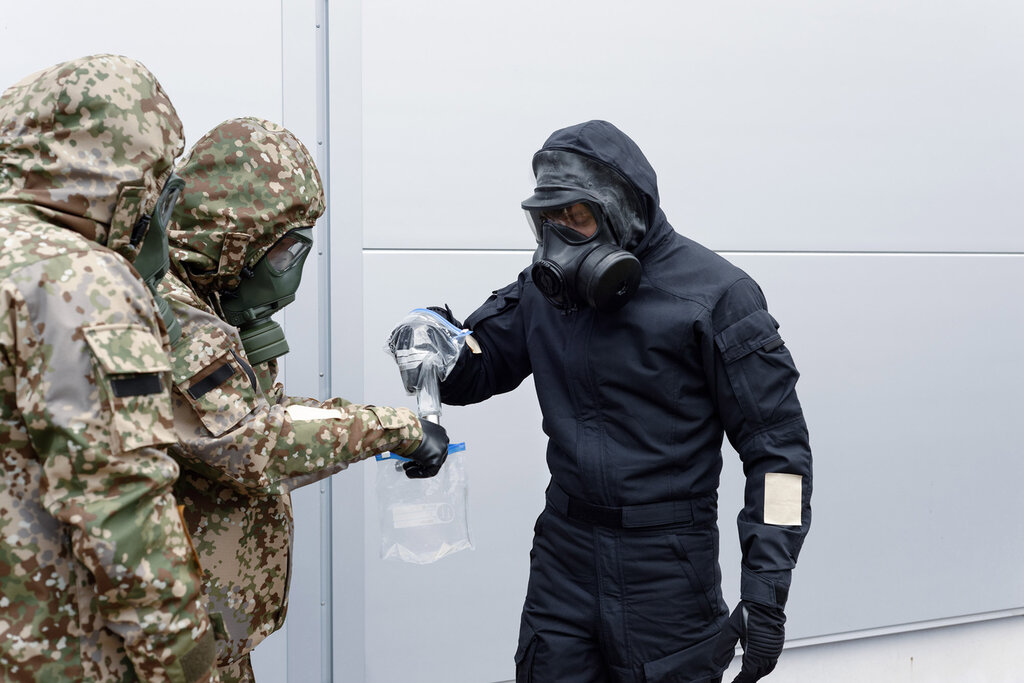Company Insight
Sponsored by Blücher
Evolving demands when countering unpredictable CWAs Mission-oriented full spectrum CBRNe protection
by Dr Andreas Arnold, Director of Product Management, Blücher GmbH, Erkrath
Main image: A generic rendering of a missionized Bombardier Global 6500, used by the U.S. Army in its latest program for Intelligence, Surveillance and Reconnaissance (ISR).
The comparison of current threats with common scenarios of the past and the analysis of mission concepts, incidents and challenges repeatedly point to new requirements for personal protective equipment against CBRNe (Chemical, Biological, Radiological, Nuclear and Explosives) threats.
These range from equipment providing high mobility, high availability, preparedness, operational capability and effectiveness of protection against a wide range of threats to favourable cost effectiveness of the equipment.
When defining characteristics of protection equipment, it is important not to lose sight of the need for protection against current threats. Over the last years, requirements like protection against airborne particulate contamination, such as biological agents, radiological materials or aerosolised persistent and highly toxic chemicals have become more frequent. These demands are not only the result of increasing civil-military co-operation but are also emphasised by military as well as civil defence forces, such as first responders, police and riot control forces, or specialists like medical emergency and EOD (Explosive Ordnance Disposal) teams.

A generic rendering of a Bombardier Challenger 650 modified for Medevac.
One new development in Personal Protective Equipment providing enhanced protection, is the integrated air permeable aerosol protection: an air permeable, aerosol protective fabric system, which overcomes the physiological deficiencies of conventional airtight barrier technologies. CBRN protective suits with such integrated aerosol filters, optimised with dedicated design elements for highest protective performance, have already been procured by the German and Norwegian armed forces. Further models as the SFI-NG Special Forces Intervention Coverall – Next Generation, are currently being both evaluated and as a result purchased by police and special military units of other nations. Recently developed stretchable aerosol protective fabrics enable the design of air permeable CBRN protective undergarments, the preferred solution for specialists like EOD teams, special forces, pilots and tank/vehicle crews.
Long-term projects, driven by users’ indications of needs and not yet enshrined in requirements and specifications, focus on novel adsorbents such as metal organic frameworks, which are expected to extend the range of hazardous chemicals against which the suits can provide protection, as well as reactive and catalytic technologies that decompose hazardous chemicals into less toxic fragments. These technologies facilitate the safe disposal of contaminated clothing; protective equipment based on such technologies is a long-term goal. The integration of sensing and detection devices into the suits as well as the incorporation of adaptive technologies, which actively switch to protective mode, are considered even longer-term goals.
The two-way exchange about capabilities and requirements between end users and industry is essential to steer research & development work towards solutions which provide a real benefit to users, whether it is a tangible improvement of comfort, ergonomics and fit, a measurable improvement of lifecycle cost or a technical improvement in terms of enhanced protection.
Again, as in similar cases in the past, standardisation work needs to keep pace with the definition of new requirements and the development of innovative technologies, such as standards for dermal protection against certain aerosols and toxic industrial chemicals. Only an established and jointly accepted framework of suitable standards will allow procurement agencies as well as end users to compare different solutions and identify the ensembles which satisfy their needs both quantitatively and qualitatively.
Contact information
BLÜCHER GMBH
Mettmanner Str. 25
D 40699 Erkrath · Germany
Phone: +49 211 92 44 - 0
Fax: +49 211 92 44 - 211
Email: saratoga@bluecher.com
Web: www.bluecher.com
